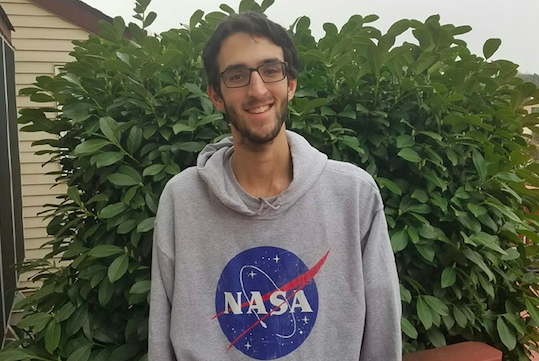
March 15, 2017
 Photo courtesy/Mike Felt
Photo courtesy/Mike Felt
Mike Felt, 19, of Dresher, Montgomery County, who plans to pursue formal meteorology studies at Penn State's main campus, provides weather forecasts to more than 11,000 members of his Facebook group.
Mike Felt can still recall the storm that kickstarted his fascination with the weather.
He and his father were waiting to ride a roller coaster at Wonderland Pier on the Ocean City boardwalk when a thunderstorm rolled through the New Jersey shore town. As lightning cracked and thunder boomed, Felt became transfixed.
"I just loved it," Felt said. "It was one of the best storms I ever witnessed. It was just nonstop."
The storm bore a youthful passion that continues to this day.
Felt, 19, of Dresher, Montgomery County, began studying the science behind the weather by consuming books, tutorials and documentaries. Two years ago, as a high school student, Felt launched his own meteorology group on Facebook, where he offers his own forecasts.
Now a freshman at Penn State Abington, Felt's "Mid Atlantic Weather Center" has grown to more than 11,000 members who post weather videos, maps and projections. Felt says his forecasts have become so popular that people even ask him to offer forecasts for their upcoming vacations or travels.
Naturally, the page was a flutter of activity as Winter Storm Stella moved through the Philadelphia region on Tuesday, dropping 2-to-6 inches of snow.
The Mid Atlantic Weather Center, a Facebook group run by Penn State Abington freshman Mike Felt, has 11,000 followers. He started it two years ago as a high school student.
Some forecasters predicted some areas could see more than a foot of snow. Felt said he settled on a forecast of 5-to-10 inches, dialing back an earlier prediction of 10-to-16 inches. His projection fell closer to the 8-to-12 inches forecasted by the National Weather Service.
Instead, Philadelphia received about 4 inches and a steady stream of sleet. Lehigh County and Northeast Pennsylvania bore the brunt of the storm, receiving 12-to-21 inches.
Given the sea pressure and the mid-level atmospheric temperature, Felt said he thought sleet could be a possibility near Philadelphia.
"I wasn't that surprised," Felt said. "I knew Philadelphia and South Jersey would probably be rain and sleet. A lot of accumulation of sleet."
Felt dreams of one day starting his own weather company or working for the National Weather Service. For now, he's working to complete his general education classes locally before matriculating to Penn State's main campus, where he plans to study meteorology and atmospheric science.
It will be his first formal training in meteorology.
But in offering his projections online, Felt already has gained a sense of the pressures that professional meteorologists face.
When his forecasts end up being accurate, Felt says he is met with praise. But when they're not, he acknowledges he sometimes receives harsh criticism — even though he's an amateur weatherman mostly making his predictions for fun.
But he insists that is part of the job — even if the criticism can sting or make forecasting stressful.
"That's part of forecasting," Felt said. "You just have to put up with it."
When Stella dropped less snowfall than projected in Philadelphia, Felt defended the professionals who had made those predictions, saying many of them worked hard to deliver an accurate projection.
Ultimately, he said, Mother Nature does what she wants, regardless of what weather models might indicate.
"Some people can be real jerks and say, 'Why didn't it snow?" Felt said. "You can't control Mother Nature."
As a youngster, Felt said he'd often find himself standing outside in the rain, admiring the light and sound as storms passed through his neighborhood.
As Felt's interest grew, he began studying various weather maps and historical analogs. He began with the basics — cold fronts, troughs and high and low temperatures — before advancing to more complex topics, like the physics behind the mid- and upper-level atmospheric temperatures.
"I loved it," Felt said. "I just never took a course. I just developed and looked at different historical models and graphs and data — and studied it for hours and hours a day."
He makes his predictions by analyzing historical analogs, jet stream patterns and the sea pressure, among other factors.
For those people ready to be done with winter, Felt offered a bit of hope.
"It looks like we do have a bit of a warmup toward the end of the month," Felt said. "It looks like the last few days will be in the 50s or 60s. Definitely a warmup, compared to this."
 Mike Felt/Facebook
Mike Felt/Facebook